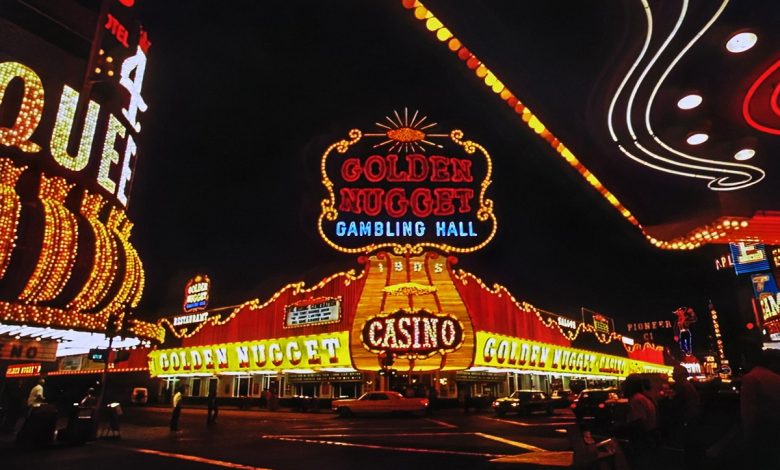A Beginner’s Roulette Guide: History, Types, and Strategies

New to roulette? Then it might serve you to start with the basics and learn the primary roulette wheel types. But suppose you want to gain an edge. In that case, you should get familiar with the best roulette strategies for different purposes.
We’ve got you covered, but first, let’s take a little stroll down history lane.
Roulette History
In a broader sense, the origin of roulette is still a matter of debate because games of chance with similar features seem to have been around since antiquity. However, if we adopt a narrow definition of the game, the word “roulette” is certainly French. So, the game itself must be French, too.
Indeed, it was the French physicist and mathematician Blaise Pascal who came up with the first roulette wheel design in the 17th century. Pascal was not devising a casino game but looking to build a machine capable of perpetual motion. This latter end wasn’t quite met as the laws of physics, especially those revolving friction, prevent an object from moving infinitely without any impulse.
However, a century later, Pascal’s wheel design would combine with elements of a similar Italian game, Biribi, to form the actual roulette casino game. According to researcher Richard Epstein, this merger happened in 1720. Until the turn of the century, the roulette wheel would become virtually identical to the one used in casinos today.
How Zero Made Its Way into the Roulette Wheel?
The zero you see on a standard Roulette wheel these days wasn’t there until the mid-19th century.
As the story goes, Prince Charles III of Monaco was looking to build a successful casino to balance the finances of his poverty-stricken principate. To that end, he summoned gambling enthusiasts Francois and Louis Blanc and put them in charge of the task.
Indeed, the twin brothers soon proved helpful. They came up with a revolutionary roulette wheel with a separate pocket for the number zero. Thus, the Blanc twins set into place a mathematical advantage to guarantee the success of their master’s casino enterprise. The new Monte Carlo Casino would become a genuine gambler’s Mecca, especially as France had started prohibiting games of chance.
Roulette Wheel Types & House Edge

The wheel’s structure is similar in American, European, or French roulette. You will see 36 pockets numbered 1 through 36, plus either one or two zero slots. While some roulettes may come with three zeros, they aren’t as common. Still, a significantly higher house edge shouldn’t make gamblers flock towards these tables.
European Roulette – 2.7% house edge
Today, European Roulette is arguably the most common variant in online and offline casinos. Its classic design with 36 numbers is paired with a single, green-coloured, zero pocket. The game allows you to place bets on any single number. These are the long shots, with potential payouts reaching 35:1.
But then you have even-money bets like Even or Odd, Black or Red, High or Low. These should be preferred as they’re easier to get right. However, if you get the colour or range right, you must settle for a 1:1 payout.
You may also place bets on the first dozen (1-12), second (13-24), or third (25-36).
American Roulette – 5.26% house edge
While an American roulette table may seem attractive, you should think twice before choosing this version. The core difference between American and European roulette is that, with the American variant, your chances are negatively affected by the presence of a second zero pocket.
The way numbers are arranged on an American roulette wheel is also different, so it might confuse you if you’re used to French or European roulette.
Remember that, with a higher house edge, your odds worsen.
French roulette – 1.3-2.7% house edge
The French roulette has only one zero pocket like its European counterpart but brings in a few modifications on the betting front. For instance, two French-specific rules, La Partage and En Prison, allow players to recover some of their stake on even-money propositions if the ball lands on zero.
Even-money bets include High/Low, Red/Black and so on. French roulette is the best version for casino players because, with these additional rules, the house edge can drop to as little as 1.3%.
How to Choose the Right Roulette Strategy?

In essence, Roulette strategies are staking systems that enable specific outcomes like recovering or minimizing losses, playing for longer, or maximizing your returns.
There’s no one-size-fits-all approach for roulette, so you should first see what the experts have to say about these systems.
For instance, the Martingale system is frequently used to recover lost bets by doubling your bet after each loss. Still, it has a downside, as you need a substantial bankroll to sustain this style of play.
Conversely, the Fibonacci and the Constant Bet strategies should be preferred if your style is more cautious or your bankroll is limited.
1. Best strategy for large bankrolls – Martingale
In theory, roulette strategies based on the Martingale staking system help recover your losses. However, as mentioned earlier, you need a large bankroll to make it work. And even with an appropriate balance, it’s still not fail-proof, as a long enough losing run may occur at any time.
You might think that if you constantly wager on Red, the ball will, at some point, land on a red number. Still, statistically, a series of 10-15 Black numbers is perfectly possible.
Ask yourself if you have enough funds to cover a potential 10th step of Martingale double staking.
2. Best strategy to minimize losses – D’Alambert
Some would include the D’Alambert system in the same category as Martingale, but we beg to differ. This roulette strategy also involves placing even-money bets, but that’s where the similarity ends. In D’Alambert, you add one unit to your stake each time you lose a wager and subtract it when you win.
For example, let’s say your bankroll is £100 and your betting unit is £1. You place one unit on Red, but the ball lands on Black. Next round, your stake will be £2. If you win, you decrease it back to £1, but if you lose, you make it £3.
You should be vigilant and keep adjusting your stake; otherwise, this system won’t work.
3. Best strategy for longer playtime – Constant Bet
If you’re on a budget, your primary goal should be not to lose your bankroll too fast. For that, your most suited option is the Constant Bet roulette strategy.
This is the most straightforward of roulette betting systems and will keep you in the game for longer. Whether you win or lose, you choose a stake and keep betting that amount.
Granted, you won’t break the casino’s bank with this one, but you have a chance to increase your bankroll more organically.
Final Roulette Tips
If you would have considered yourself a roulette novice before reading this article, now you’ve got the skills of an informed player. Remember always to choose the roulette wheel with the slightest house edge. If your casino doesn’t offer French Roulette, go for the European variant instead. Also, we didn’t simply leave out exotic variations like the mini roulette in our article. We left them out intentionally because their house edge puts you at a disadvantage.
In terms of strategies, there’s no tried and tested way to win at roulette all the time, but you can use our suggestions to gain an edge. If we were to crown the best system, that would probably be the D’Alambert. It’s the most balanced, leaving out Martingale’s inherent risk or the Constant Bet strategy’s potential monotony.
Read Next: How to Install ElvUI on World of Warcraft? Change Your UI!



